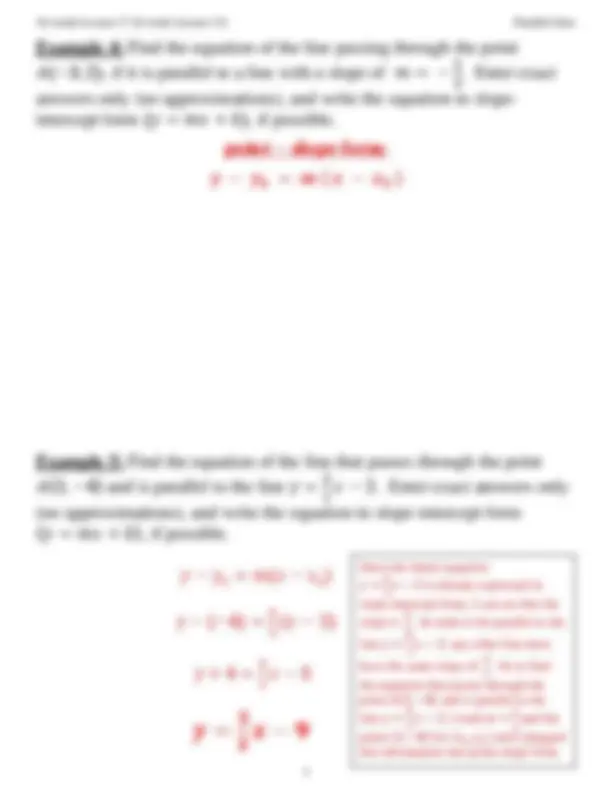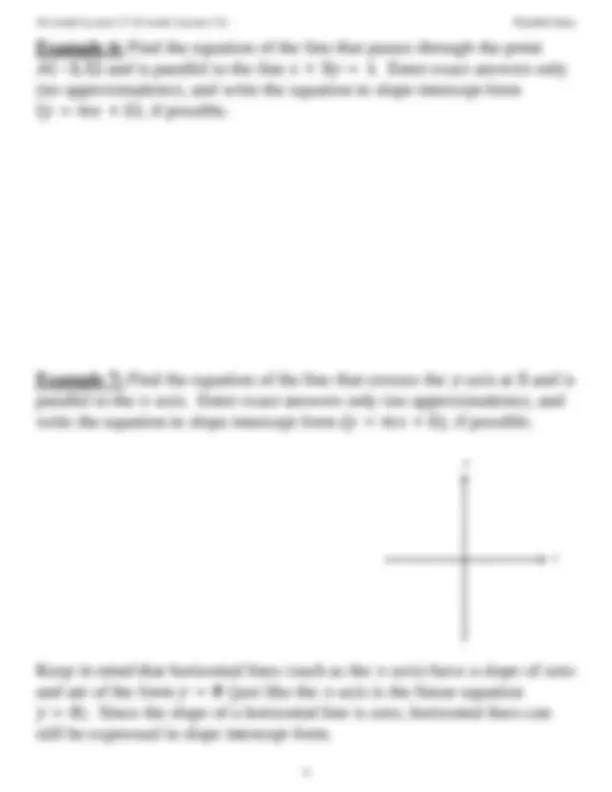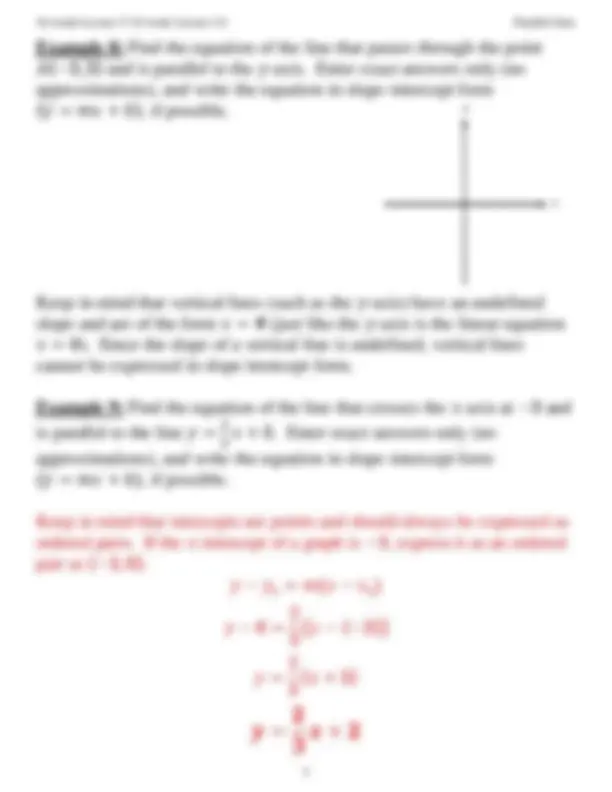





Study with the several resources on Docsity

Earn points by helping other students or get them with a premium plan


Prepare for your exams
Study with the several resources on Docsity

Earn points to download
Earn points by helping other students or get them with a premium plan
Community
Ask the community for help and clear up your study doubts
Discover the best universities in your country according to Docsity users
Free resources
Download our free guides on studying techniques, anxiety management strategies, and thesis advice from Docsity tutors
Instructions on how to find the equations of parallel lines using the slope and point method. It includes examples of finding the slope of parallel lines, as well as examples of finding the equation of a line that is parallel to a given line and passes through a specific point. The document also covers the concept of parallel lines never intersecting.
Typology: Study notes
1 / 7

This page cannot be seen from the preview
Don't miss anything!




To find the equation of a line, you need to have one point that the line
passes through and the slope of the line. If you are not given the slope of
the line, such as the example we’re about to see, you need to identify two
points that the line passes through so that you can find the slope.
Regardless of whether the slope is provided or not, you can find the
equation of the line using point-slope form (𝑦 − 𝑦
1
1
) by
replacing 𝑥
1
and 𝑦
1
with the coordinates of any point that the line passes
through, and by replacing 𝑚 with the slope of the line. You can then
express your answer in slope-intercept form
by solving the
equation for 𝑦.
Example 1 : Find the slope of each of the following lines given below.
As stated above, in order to find the equation of line we either need one
0
1
2
3
4
5
-5 -4 -3 -2 -1 0 1 2 3 4 5
𝑙
1
𝑙
2
Parallel lines:
When finding the equation of a line that is parallel to some other line,
always start with the slopes. If two lines are parallel, their slopes are the
same.
Example 2 : Find the slope of a line that is parallel to the line 𝑦 =
3
4
Enter exact answers only (no approximations).
Example 3 : Find the slope of a line that is parallel to the line
6 𝑥 + 7 𝑦 = 11. Enter exact answers only (no approximations).
In this case we need to express the linear equation 6 𝑥 + 7 𝑦 = 11 , which is
in general form, in slope-intercept form
. That means we
need to get the 𝑦 variable by itself.
Now that the linear equation is in slope-intercept form, we can see that the
slope is −
6
7
. In order to be parallel to the line 6 𝑥 + 7 𝑦 = 11 , any other
line must have the same slope of −
6
7
Example 6 : Find the equation of the line that passes through the point
and is parallel to the line 𝑥 + 3 𝑦 = 1. Enter exact answers only
(no approximations), and write the equation in slope-intercept form
, if possible.
Example 7 : Find the equation of the line that crosses the 𝑦-axis at 5 and is
parallel to the 𝑥-axis. Enter exact answers only (no approximations), and
write the equation in slope-intercept form (𝑦 = 𝑚𝑥 + 𝑏), if possible.
Keep in mind that horizontal lines (such as the 𝑥-axis) have a slope of zero
and are of the form 𝑦 = # (just like the 𝑥-axis is the linear equation
𝑦 = 0 ). Since the slope of a horizontal line is zero, horizontal lines can
still be expressed in slope intercept form.
Example 8 : Find the equation of the line that passes through the point
and is parallel to the 𝑦-axis. Enter exact answers only (no
approximations), and write the equation in slope-intercept form
, if possible.
Keep in mind that vertical lines (such as the 𝑦-axis) have an undefined
slope and are of the form 𝑥 = # (just like the 𝑦-axis is the linear equation
𝑥 = 0 ). Since the slope of a vertical line is undefined, vertical lines
cannot be expressed in slope intercept form.
Example 9 : Find the equation of the line that crosses the 𝑥-axis at − 3 and
is parallel to the line 𝑦 =
2
3
𝑥 + 5. Enter exact answers only (no
approximations), and write the equation in slope-intercept form
(𝑦 = 𝑚𝑥 + 𝑏), if possible.
Keep in mind that intercepts are points and should always be expressed as
ordered pairs. If the 𝑥-intercept of a graph is − 3 , express it as an ordered
pair as
1
1
Answers to Examples:
1
1
2
2
1
2
3
4
6
7
5
4
7
4
5
2
1
3
2
3
5
2
1
3